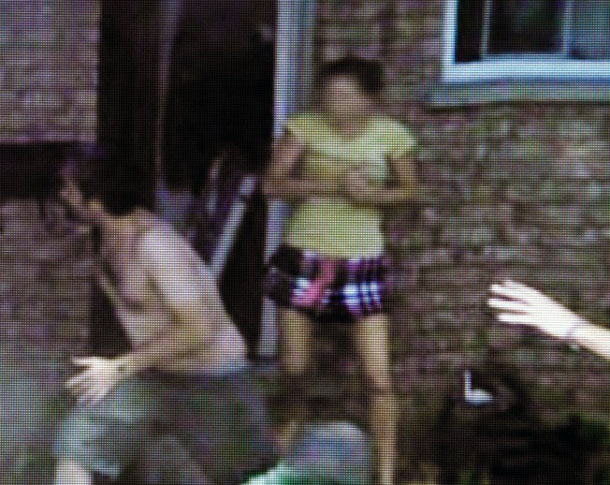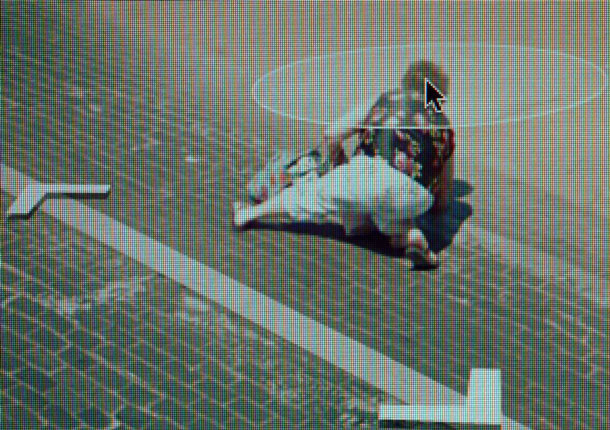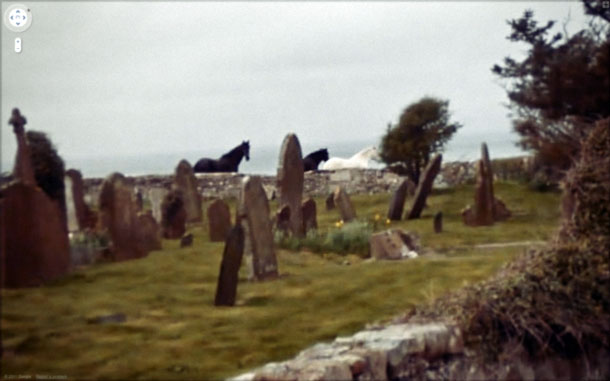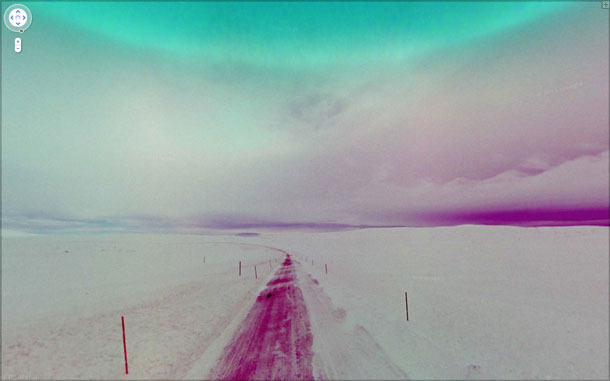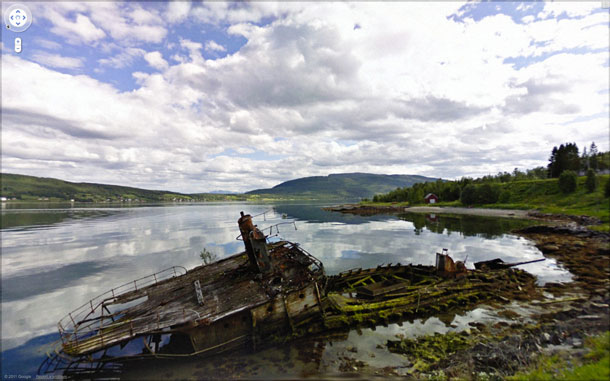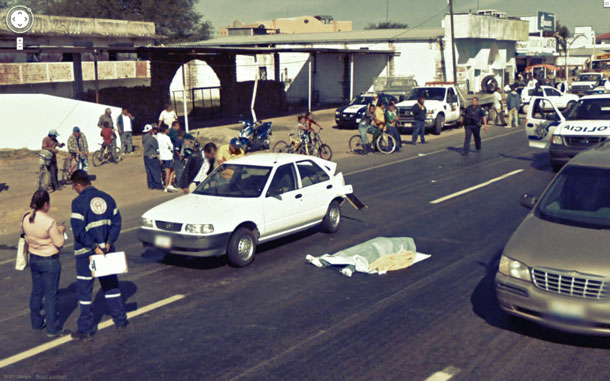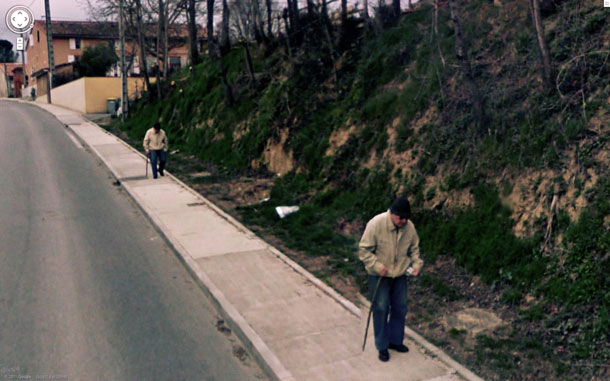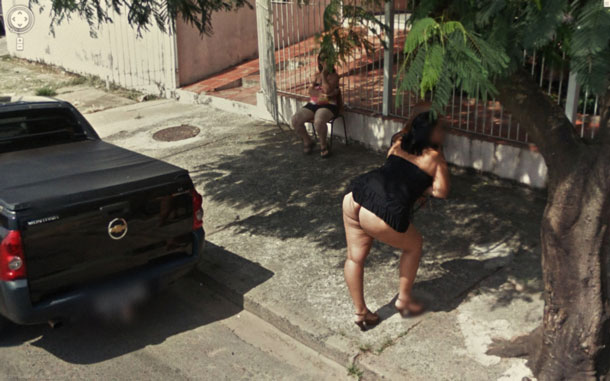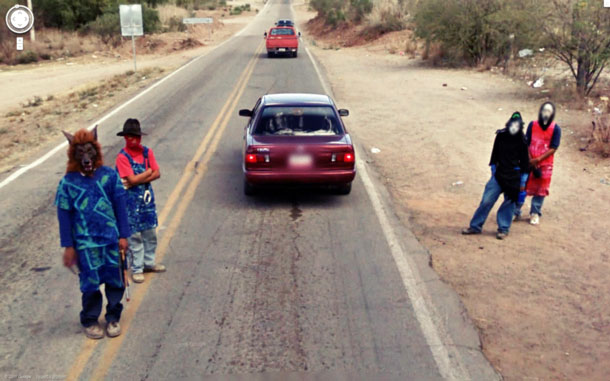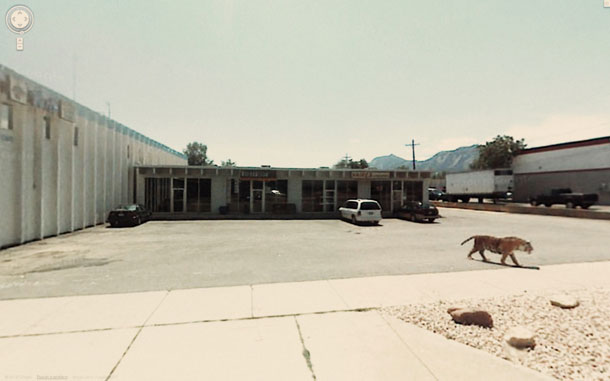There’s hardly anything left in life you can’t do from the comfort of your bed. There’s really not much need to leave home anymore. You can work, shop, order food, see friends, date, watch movies and participate in pretty much any activity in some form through the Internet. There are certain things, however, where you’d assume that physical presence is an essential prerequisite — like photography. Guess what, there are people, even “street photographers,” who are taking part in and are even winning awards for their pictures of places they may never have visited, except online.
Become a stay-at-home street photographer. Photography under voluntary house arrest, really.
Hard to believe, but real. There’s a growing number of photographic artists who are using Google Street View. Take Michael Wolf who received an honorable mention in the 2011 World Press Photo Awards.
It’s work made sitting in front of a computer terminal, photographing — and cropping and blowing up — moments from Google’s Street View.
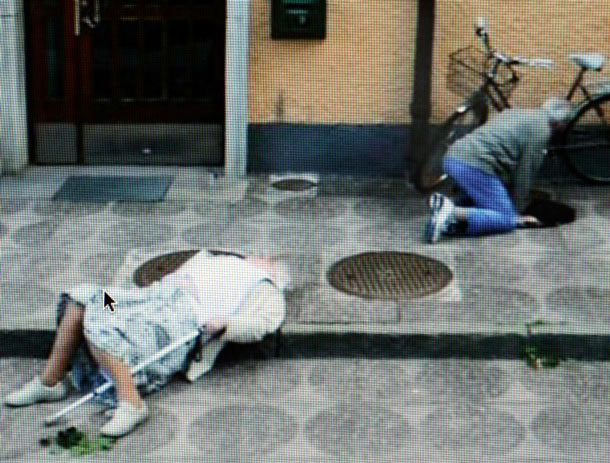
When Wolf got that honorable mention, the response was immediate — and overwhelmingly hostile. Some argued the work wasn’t photojournalism, more aggressive critics argued that Wolf wasn’t even a photographer at all. Really,
Well, in 1994 the German national moved to Hong Kong and worked for eight years as a contract photographer for Stern magazine, until he left to pursue his own projects. Wolf’s photographic work in Asia focuses on the city and its architectural structures, and follows on from his interest in people and human interaction. He has published seven photobooks to date.
To his first accusers one might respond that indeed it’s hard to find the news part in this kind of photography, whereas the way of making these pictures was itself a newsworthy story requiring an up-to-the-minute investigation.
To the more aggressive critics Wolf responded that he was part of a long history of artistic appropriation of which his detractors were presumably unaware… Wolf had at his disposal a surveillance project of unprecedented magnitude, which, in turn, is just a single strand in the larger network of state and corporate monitoring of daily life.
The world was at the fingertips of photographer Wolf. The moment he grew bored prowling the streets of a city he just zoomed off to some other place to see what was happening there. And indeed Wolf is not the only photographer working in this way. Jay Rafman is another.
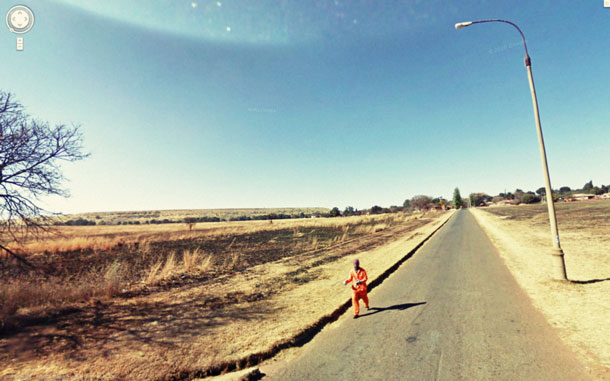
Rafman, living in Montreal, is the personification of the couch potato photographer whose knowledge of the world derives entirely from representations of it. While Wolf’s an old-school photographer, Rafman might as well be gazing at life on Earth from a distant space station.
As if real life became too boring. Wolf fell into this way of working when he moved from Hong Kong to Paris — one of the great traditional loci of street photography — only to discover that the city had nothing to offer him photographically.
Compared to the constantly changing cityscapes of Asia, Paris was an open-air mausoleum that had remained largely unaltered for more than a hundred years.
Wolf saw quickly that the indifferent gaze of the Street View camera randomly recorded what he called “Unfortunate Events”: altercations and accidents, pissings and pukings, fights and fatalities. More “events” than he could ever dream of to capture with his own camera.
The Street View cars usually go about their business unnoticed — or at least more unnoticed than a photographer with his gear ready to fire pointed into the faces of bystanders.
In tandem with Wolf’s instant pan-global denunciation and praise, it quickly became clear that there were a number of people doing pretty much the same thing as Wolf — such as Rafman, who says his pictures are “photography that no one took and memories that no one has.”
So no need to ever set a foot outdoors. It may not be the most ethical or conceptual photography, but nevertheless it can be counted as somewhat artistic. It’s “photographing democratically,” as William Eggleston coined the phrase.
Instead of onlookers getting ready for the Google Street View vehicle, there are just these randomly taken people, indifferent or surprised, as the little car with its periscope came goest about its business, covering even street in the land, as inevitable and accidental as death itself:
“The solving emptiness,” as poet and novelist Philip Larkin once said, “that lies just under all we do.”
